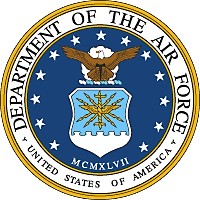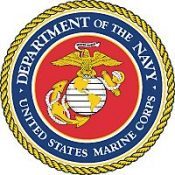
- Name: Jon Harold Richardson
- Location of Birth: Minneapolis, Minnesota
- Date of Birth: September 8, 1933
- Date of Death:
- Parents: Leonard Alvin Winthrop and Marion Pauline Richardson
- High School and Class: GED
- College:
- Highest Rank: CMST (Chief Master Sergeant)
- Branch: Air Force
- Other Branch: Marine Corp
- Date Sworn In: January 10, 1952
- Place Sworn In: Federal Office Building - Minneapolis, Minnesota
- Date of Discharge: March 1, 1982
- Place of Discharge: McClellan Air Force Base, Sacramento, California
-
Units and Locations:
Start Date End Date Unit(s) and Location(s) Served January, 1952 March, 1953 Marine Corps Recruit Depot - San Diego, California March, 1953 November, 1953 Naval Training Center (Aviation Ordinance School) - Jacksonville, Florida November, 1953 December, 1954 United States Naval Station Treasure Island - San Francisco, California July 10, 1955 August, 1955 Marine Reserve Squadron - Wold Chamberlain Field in Minneapolis, Minnesota August, 1955 March, 1956 Airborne Early Warning Radar Technology School at Keesler Air Force Base in Biloxi, Mississippi March, 1956 July, 1964 551st Airborne Early Warning & Control Wing at Otis Air Force Base in Cape Cod, Massachusetts July 4, 1964 January, 1965 Seismic Technician - monitoring nuclear tests at Lowry Air Force Base in Denver, Colorado January, 1965 July, 1971 1155 Technical Operations Squadron at McClellan Air Force Base in Sacramento, California July, 1971 July, 1972 Detachment 205 at Shemya Air Force Base in Alaska July, 1972 July, 1974 Detachment 412 in Bangkok, Thailand July, 1974 July, 1975 Detachment 1 at Cheyenne Mountain Air Force Base in Colorado Springs, Colorado continued below - Military Awards:
Air Crew Member Wings
Air Medal
Air Force Commendation Medal
Joint Service Commendation Medal - Military Highlights:
On January 10, 1952, I joined the United States Marine Corps. I was trained as an Aviation Ordinance man. After training I was assigned to VMF(N)-542 (Marine Night Fighter Squadron) at El Toro, California. I worked on both Grumman F7F-3N Tigercat and Douglas F-3D2 Skyknight Ordinance Units, both night fighters, at the Marine Corps Air Station in Kaneohe Bay, Hawaii where I spent the next 19 months until I rotated back to the United States Naval Station Treasure Island in San Francisco, California for discharge. On January 10, 1955, I was discharged from active duty and assigned to Marine Corps Reserves at Wold Chamberlain Field in Minneapolis, Minnesota. On August 22, 1955, I re-enlisted into the United States Air Force and was sent to Keesler Air Force Base in Biloxi, Mississippi for training as an airborne radar technician. After 7 months of training I was assigned to the 551st Airborne Early Warning and Control Wing at Otis Air Force Base on Cape Cod, Massachusetts. On arrival I was processed into the 551st Electronics Maintenance Squadron, Radar Maintenance depot level maintenance shop. After 9 months, I took the test, had an interview, and passed both to become an airborne radar technician on flying status with a $ 75.00 per month pay raise. A welcome addition with a new wife and baby. I flew for the next 7 years and accumulated approximately 4,000 flight hours
In July, 1964, I was reassigned to Lowry Air Force Base in Denver, Colorado for training into a seismic tech course. At the completion of the course, I was assigned to the 1155th Technical Operations Squadron in Sacramento, California. I worked in the seismic equipment shop doing depot level maintenance on seismometers, heli recorders, and associated equipment. After 6 months I learned that there was an opening in F system and it was on flying status. I applied and after an interview and an equipment test, I was accepted and became the non-commissioned officer in charge of F system and a special equipment operator on an EC135 aircraft used to monitor foreign nuclear weapons tests. I saw 11 French tests on Mururoa Atoll in the South Pacific, 8 from the aircraft and 3 from a United States Navy Ship, the USS Granville S. Hall (YAG 40). This covered the period from 1966 to 1971. In 1971 I was transferred to Detachment 205 at Shemya Air Force Base in Alaska, which is the next to the last island in the Aleutian chain which was closer to Russia than Alaska. This was an unaccompanied tour (without dependents) for 12 months. At the completion of this tour, I was transferred to Detachment 412 in Bangkok, Thailand. This was an accompanied tour for 24 months. I was again the non-commissioned officer in charge of the I(eye) technique. The I(eye) technique is a detection system and it was one of the oldest systems the Air Force Technical Applications Center had used. The I(eye) technique was unique in that it listened for the sound a weapon made on detonation. This sound would travel for thousands of miles and was detectable with special sensors. In July, 1974, the I(eye) Technique detected a nuclear event that India had detonated. This event came as a surprise to all. When my tour was completed in July, 1974, it was time to pack up and go to my next assignment--the Norad Command Post at Cheyenne Mountain Air Force Station in Colorado Springs, Colorado. I was assigned as a noncommissioned officer in charge of the closed circuit TV system within the mountain. That was 24 monitors on 8 channels 24/7 including 2 top secret channels. Because of the unique capabilities of this system, I was given an Assignment Deferment Code 44, which in a sense, meant I couldn't be reassigned for three years. So we bought a house and settled down for a nice three year tour. At about the eleventh month of my three year tour, I got a call to come to the Chief of Maintenance office. I reported in to a Full Colonel and he said sit down, Jon. I immediately became suspicious when he used my first name. Full Colonels don't usually use your first name unless you or one of your troops are in trouble. The Colonel continued on with small talk until he came to the point of my visit. Captain so and so had got orders and was leaving Detachment 1 Lamar and now they needed a Commander at Detachment 1 in Lamar, Colorado. Detachment 1 was a high frequency radio station out on the prairie of Eastern Colorado, providing high frequency radio communication for Cheyenne Mountain following for Air Force One, and other priority communication requirements. What happened to my Code 44 you asked? Well, the 47th Communications Group is all of the communications in Cheyenne Mountain and Detachment 1 Lamar is part of the 47th Communications Group so I still had my Code 44 for 3 years, only now my duty station was in Detachment 1 Lamar and sure enough at the end of my three years, I received orders for Detachment 187 at Karatas, Turkey. This was Tropospheric scatter radio location supporting Incirlik Air Base, a NATO location. Tropospheric Scatter is a method of communicating with microwave radio signals over a considerable distance. While there I received orders promoting me to Chief Master Sergeant (E-9). I also got orders to my next duty station, 1155 Technical Operations Squadron at McClellan Air Force Base in Sacramento, California. There I was assigned duty as Superintendent of McClellan Central Laboratory--the only laboratory in all of the military to process air samples from around the globe and analyze debris samples captured on airborne filters.
On March 31, 1982, I retired with thirty years of active duty. And if I was needed, I would do it all over again. - Wars Involved:
Cold War - MIA / POW:
- Civilian Life:
- Tribal Affiliation(s):

